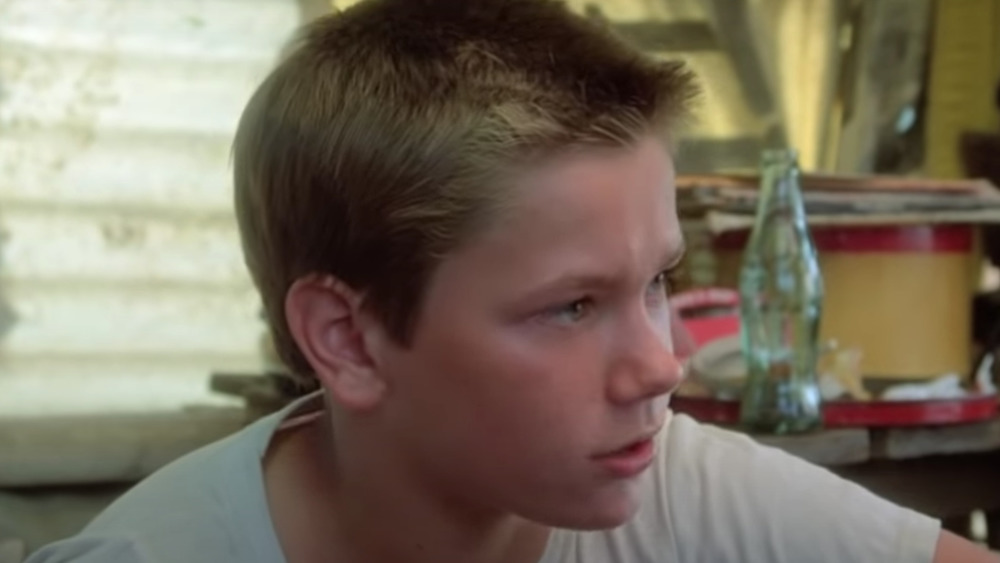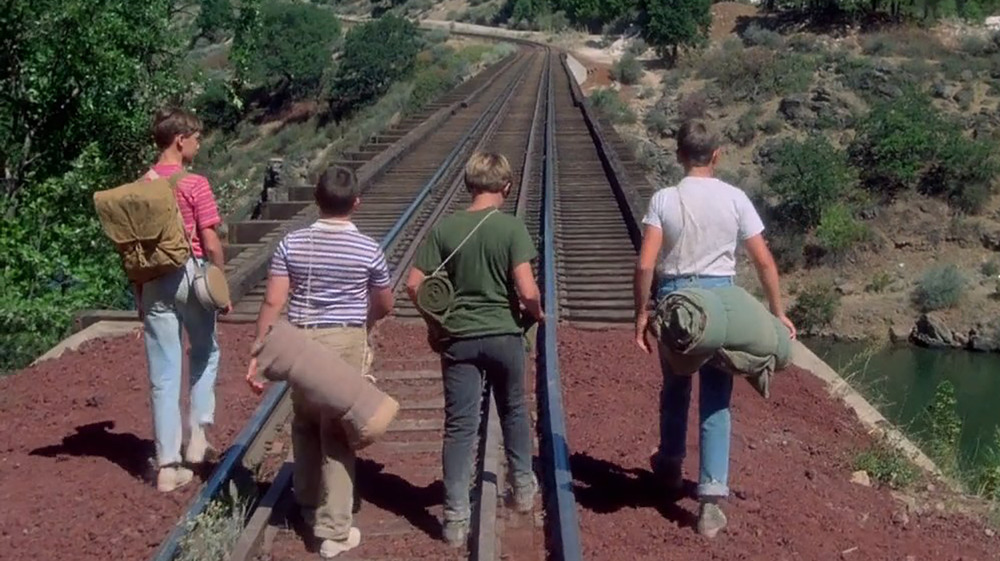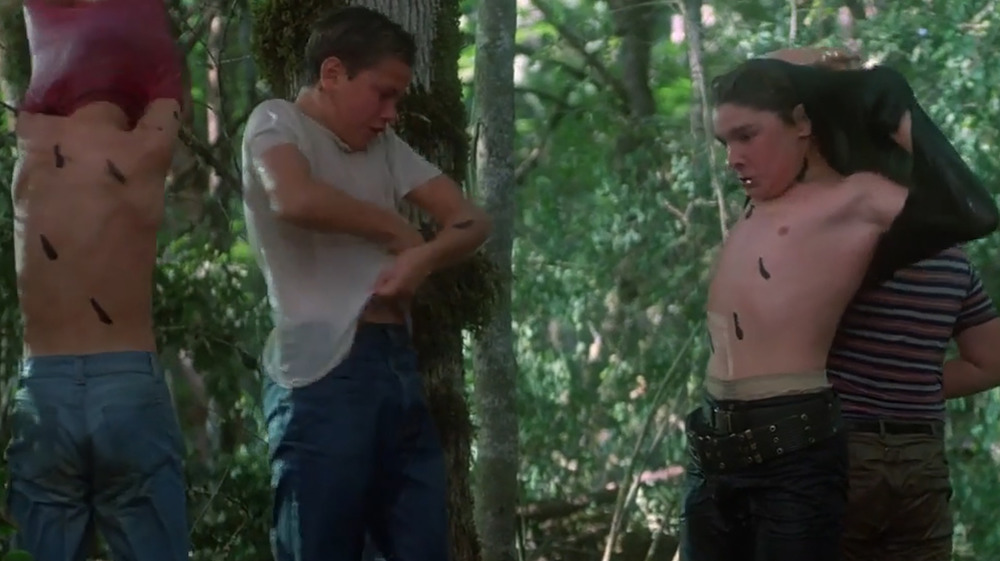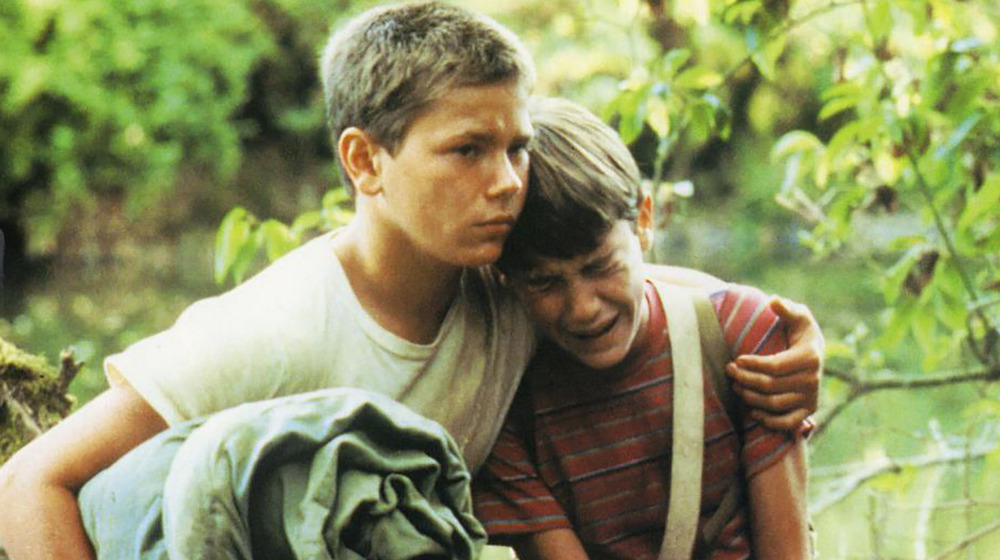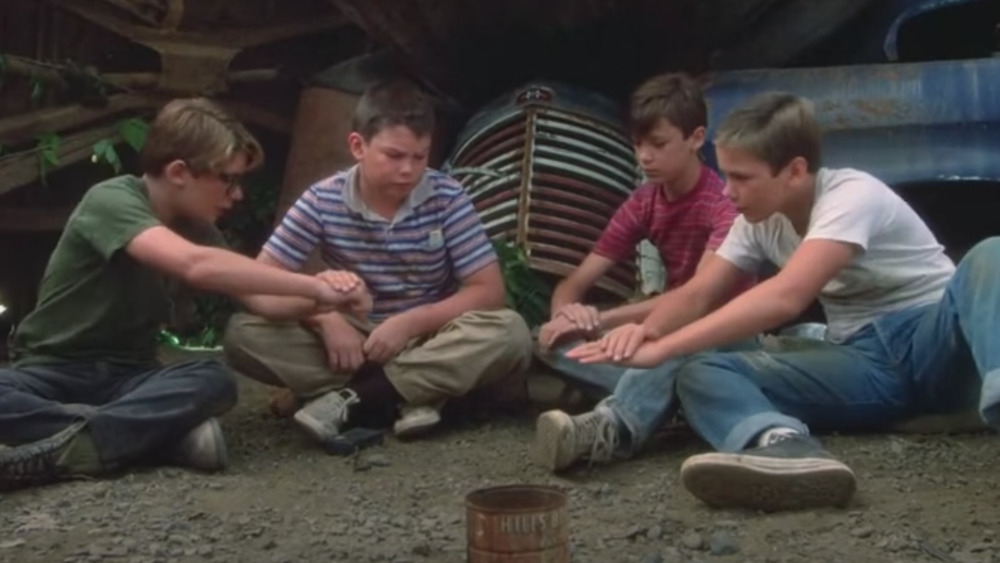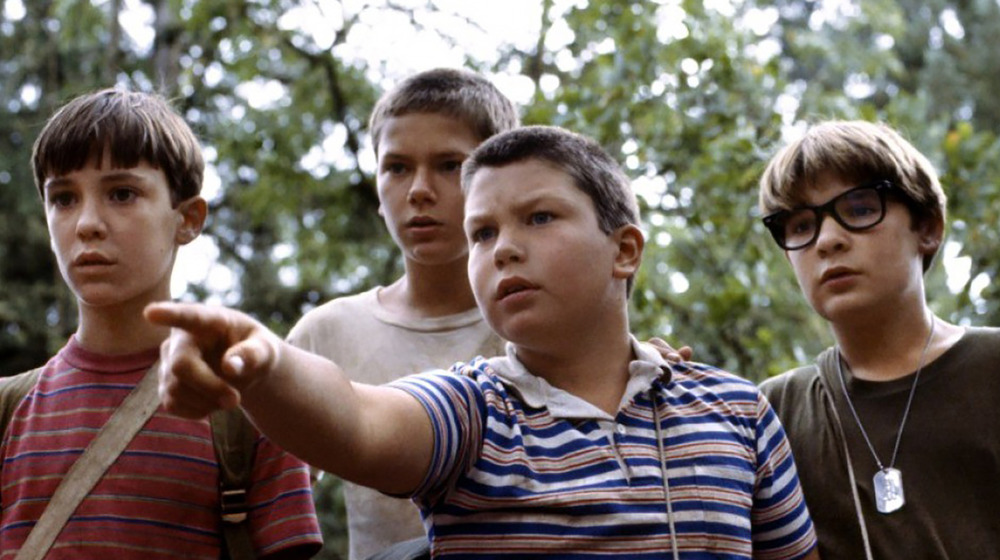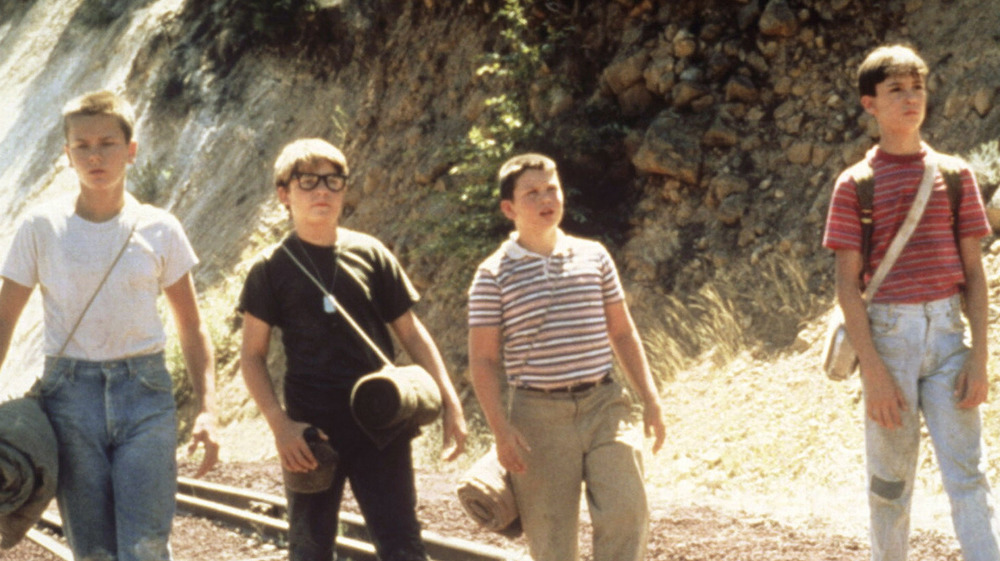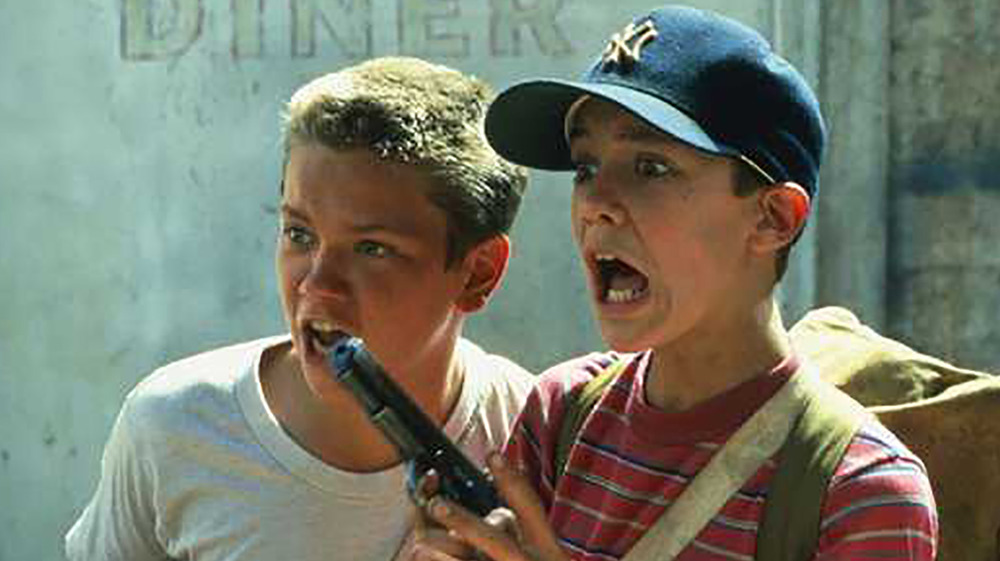Why Stand By Me Is The Best Movie Based On A Stephen King Story
As recently as 10 years ago, the position that "Stand by Me is the best movie based on a Stephen King story" was hardly a hot take. It had competition from Stanley Kubrick's version of The Shining, which King famously hated, as well as Frank Darabont's adaptation of The Shawshank Redemption, but Stand by Me reigned because of how different from King's typical fare it was.
It hasn't been easy for Stand by Me to hold its title. The avalanche of King-related content since Brian De Palma's Carrie in 1976 has been almost nonstop and wide-reaching. The last decade alone has seen a lot of contenders for that lofty perch, both on the big screen and on television (although plenty of productions based on King's work fall squarely into B-movie territory).
Still, none of this has tarnished the rosy view audiences have of Stand by Me, which has retained a warm place in their hearts. Maybe the right opinion is that it's still the best movie based on a Stephen King story. Here's a closer look at what makes Stand by Me stand out.
Is it a Stephen King story?
By the mid-1980s, Stephen King movies had become a genre unto themselves, and audiences knew what they were likely to get. Most viewers probably weren't avid King readers and therefore probably weren't familiar with his lesser-known short literary fiction. Critics often call his short stories his most mature work (a description that's arguably a bit dismissive of the sci-fi and horror genres).
Stand by Me is based on King's novella The Body, which was published in King's 1982 collection Different Seasons. Based on the title alone, it sounds like a horror story. Even the plot summary sounds a bit gruesome: Four young boys venture out to potentially see the dead body of a peer. You'd think this macabre mission is a boilerplate Stephen King fright show from the pitch, but The Body is a departure from the author's usual style.
Neither screenwriters Bruce A. Evans and Raynold Gideon nor director Rob Reiner tipped their collective hat. The titular body was mostly a MacGuffin, and the story was really more of a coming-of-age journey. It featured a strong cast of young stars, a narrative through-line that both glorified and criticized "the good old days," and just enough comedy to keep things grounded — but nothing bloody or supernatural.
This surprised audiences and helped both the author and the film adaptation marketplace expand their potential reach. Prior to Stand by Me, a King novella like Rita Hayworth and the Shawshank Redemption had little hope of getting the green light; after, such projects were inevitable.
Is it a Rob Reiner film?
Stand by Me also marks Rob Reiner's third film as director and the first that wasn't overtly marketed as a comedy. Prior to his film debut both behind and in front of the camera in This Is Spinal Tap, Reiner was known for two things: being the son of legendary comedian Carl Reiner and playing the meathead son-in-law Michael Stivic on the hit sitcom All in the Family.
Stand by Me had comedic elements (including a hilariously gross scene involving leeches), but it wasn't a comedy per se. The story followed four young boys who come from dysfunctional or abusive family situations in the factory town of Castle Rock. They've largely resigned themselves to a future of repeating the cycles of their parents. For better and for worse, the bonding experience of their journey changes their lives — as does their eventual locating of the body, which reminds them of their own mortality.
It's heavy material, and not what people would expect from a director and actor known for lighter fare like This Is Spinal Tap or John Cusack romp The Sure Thing. Audiences appreciated this second level of slate-cleaning: A story from Stephen King that wasn't overtly horrific, rendered by a director dialing his comedy skillset way back.
After Starman and almost out of luck
Screenwriters Bruce A. Evans and Raynold Gideon unwittingly initiated the project in 1983 after Evans sent Gideon's wife the Stephen King novella for her birthday. Karen Gideon then shared the story with Raynold. Evans and Gideon were screenwriting partners who would soon hit the big time with their script for the John Carpenter film Starman. The Body was an intriguing possibility.
However, there were many obstacles on the path to The Body becoming Stand by Me. Stephen King's literary agent wanted over $100,000, as well as a percentage of the gross — a tough sell, in those days. The screenwriters managed to work out a deal with Embassy Pictures, at one time the production company owned by producers Norman Lear and Jerry Perenchio. Evans and Gideon chose director Adrian Lyne to helm the movie.
In a classic case of Hollywood serendipity, Lyne had to back out of the project. Director Rob Reiner was part of the studio's inner workings and had access to the script for The Body. He stated that if Lyne couldn't do it, he would.
Things were on track until Embassy Pictures was sold to Coca-Cola, which, at that time, also owned Columbia Pictures. Production was shut down. Reiner was able to get former Embassy owner Lear (who was also Reiner's former boss on All In The Family) to intervene, and the deal was revived as a Columbia Pictures project. The hoops production went through make us appreciate the final product all the more.
It could have been much different
If the original production deal had gone according to plan, the movie could have been very different.
Adrian Lyne was a hot commodity at the time, coming off of the success of Flashdance and finishing work on erotic drama 9 1/2 Weeks. Much of what Evans and Gideon had on the page already would have informed Lyne's production, but the final result likely would have had a harder, more adult edge. Lyne went on to direct Indecent Proposal, Jacob's Ladder, and Fatal Attraction, all of which handle dark themes.
Lyne's departure from the project allowed Rob Reiner to move in. Stand by Me thrives thanks largely to Reiner's lighter touch, which emphasizes the relationships between the four protagonists; indeed, the rich character development and bittersweet emotional acuity make the movie shine. One can only speculate whether Lyne's version would have focused more on the corpse than on the boys.
In an oral history told to Variety, Reiner said of the story, "I thought, there's a lot of great characters here, good dialogue, but there's no focus to it. I spent the next four days riding around Los Angeles, trying to think of a way to make it work." Reiner improved the story by centering it mostly on the character of Gordie (Wil Wheaton). While the screenwriters were resistant to changes, they realized that telling the story from a specific point of view provided a hook for viewers.
A strong cast makes the movie
Let's face it: Most child actors aren't great performers. The 1980s saw its share of cute ragamuffins delivering stilted line readings.
It was imperative that Stand by Me, a movie where its young stars carried the full story upon their shoulders (aside from Richard Dreyfuss' narration as the adult Gordie), have excellent acting. Casting agents Jane Jenkins and Janet Hirshenson delivered a mix of new and familiar faces. Of the group, Corey Feldman was likely the most famous, thanks to his appearances in Gremlins and The Goonies, followed by River Phoenix, seen one year before in Joe Dante's Explorers. Wil Wheaton and Jerry O'Connell were relatively unknown. Kiefer Sutherland (who later teamed up with Feldman again in vampire flick The Lost Boys) also had a menacing turn as the antagonist Ace Merrill.
The kids were incredibly well cast, with each actor fitting the personality of his character. The kids' closeness to the roles made their performances uniquely convincing among King adaptations. Indeed, in 2009, Wheaton posted on his blog, "I've always said that Stand by Me was so successful because Rob cast four young actors who were so much like their characters, but I think it's spooky how the four of us ended up being so much like our characters: River died too young, Corey struggled like crazy to get his personal demons under control, Jerry found success and happiness, and I'm a writer."
A score of oldies captures sentimentality
Including famous songs in a film can be an expensive proposition. Aside from royalties for songwriters and performers, a production pays licensing to music publishing companies and record labels that own the original recordings. Cost is one reason why a film might opt to make its own tunes instead of using famous tracks.
The producers of Stand by Me wisely chose to spend the money and gain the rights for the much-beloved compositions used throughout the film. Tunes like Buddy Holly's "Everyday" and Jerry Lee Lewis' "Great Balls of Fire" capture a time and place, imbuing the movie with a sense of boyhood nostalgia that's key to its success.
The music even gave the movie its name. The working title had been The Body, just as it was for Stephen King's novella, but the production company didn't like it because, as screenwriter Raynold Gideon said in the DVD's accompanying booklet, it "sounded like...another Stephen King horror film." Ben E. King's classic song "Stand by Me" was already slated to be used at the end of the movie. As Gideon explained, "Rob (Reiner) came up with Stand by Me, and it ended up being the least unpopular option."
The film that moved a King
Don't take my word for it that Stand by Me is the best adaptation of King's work. The author himself would probably tell you that, too.
Pleasing Stephen King with adaptations of his work is a famously difficult task. Even Stanley Kubrick, patron saint of cinephiles, was not spared; King cuttingly dismissed his adaptation of The Shining as "a beautiful car with no engine in it."
Stand by Me was an altogether different proposition. As recounted by Rob Reiner in an article in The Chicago Tribune: "We showed the film to Stephen King alone in a screening room, and when it was over he was pretty broken up. He excused himself for about 15 minutes. When he came back he said, 'That's the best film ever made out of anything I've written, which isn't saying much. But you've really captured my story. It is autobiographical. All that was made up was the device of the hunt for the body.'"
In multiple interviews, Reiner has also called Stand by Me a favorite entry in his own filmography. This potential career gamble worked so well that it afforded Reiner a second shot at King's oeuvre, the famously suspenseful Misery (1990). He also tried his hand at additional adaptations, such as William Goldman's The Princess Bride.
